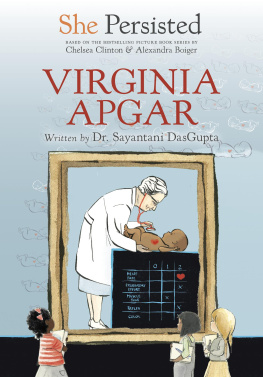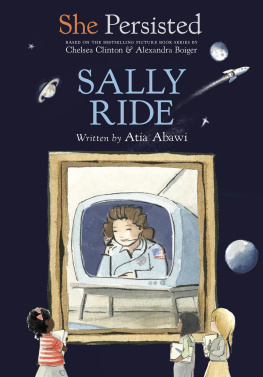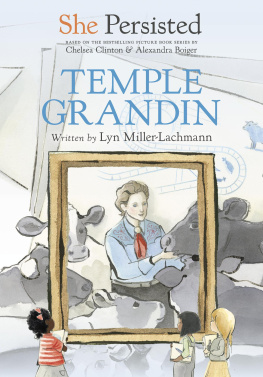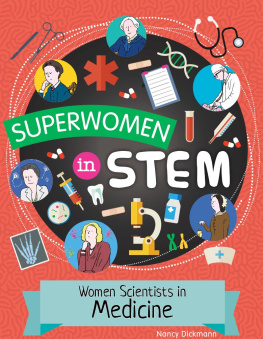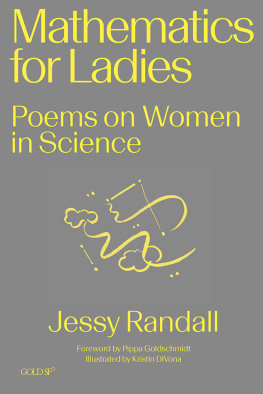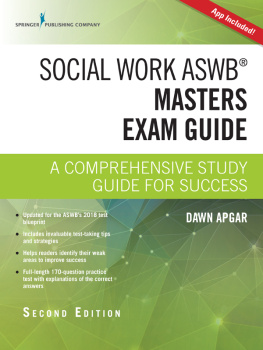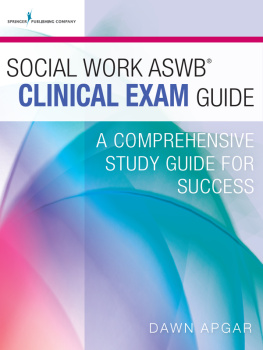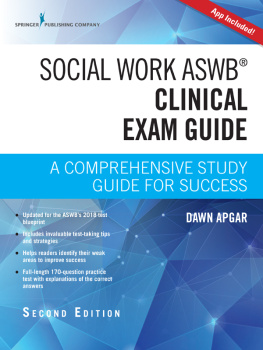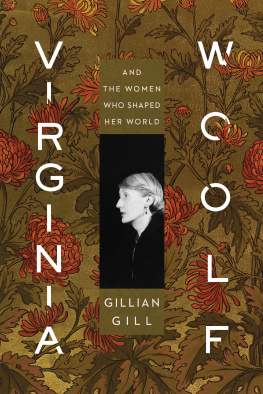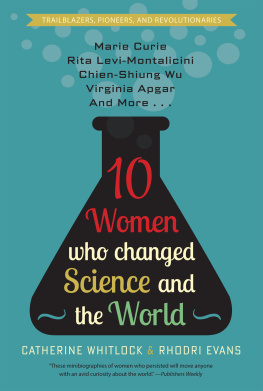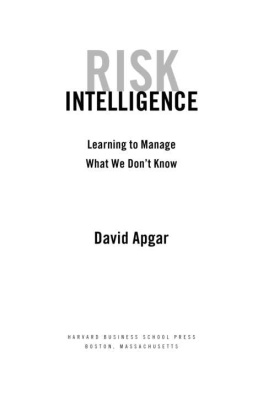
This book is dedicated to the strong, accomplished women in my life, all of whom make a difference every day, and not just to me: Jennifer Costin Thomas, Kelly Dimopoulos Lentine, Samantha Hoffman, Esm Raji Tolnai, Denise Pagel Moskowitz, Dr. Cheryl Gutmann, Dr. Brenda Darrell, my sister, Mindy S. Apel, and, most important, my mother, Carol Apel.
With much gratitude and thanks, I acknowledge the assistance of Eric Apgar, Judy Hankinson of the Apgar Family Association, Inc., and Dr. Selma Calmes, without whom this book would not be the tribute that it is.
Melanie Ann Apel
Published in 2020 by The Rosen Publishing Group, Inc.
29 East 21st Street, New York, NY 10010
Copyright 2020 by The Rosen Publishing Group, Inc.
First Edition
All rights reserved. No part of this book may be reproduced in any form without permission in writing from the publisher, except by a reviewer.
Library of Congress Cataloging-in-Publication Data
Names: Uhl, Xina M., author. | Apel, Melanie Ann, author.
Title: Virginia Apgar: groundbreaking doctor / Xina M. Uhl and Melanie Ann Apel.
Description: First edition. | New York: Rosen Publishing, 2020 | Series: Super female scientists | Includes bibliographical references and index.
Identifiers: LCCN 2019007509| ISBN 9781725340541 (library bound) | ISBN 9781725340534 (pbk.)
Subjects: LCSH: Apgar, Virginia, 19091974Juvenile literature. | Women anesthesiologistsUnited StatesBiographyJuvenile literature. | AnesthesiologistsUnited StatesBiographyJuvenile literature. | Women physiciansUnited StatesBiographyJuvenile literature. | Apgar score HistoryJuvenile literature.
Classification: LCC RD80.62.A64 U45 2020 | DDC 617.9/6/092 [B]dc23
LC record available at https://lccn.loc.gov/2019007509
Manufactured in the United States of America
On the cover: Dr. Virginia Apgar and an unnamed nurse attend to a newborn baby, evaluating the infant for the five criteria of the Apgar score.
CONTENTS
CHAPTER ONE
GROWING UP
CHAPTER TWO
CHOOSING A SPECIALTY
CHAPTER THREE
ANESTHESIA AND CHILDBIRTH
CHAPTER FOUR
CREATING THE APGAR SCORE
CHAPTER FIVE
MORE THAN MEDICINE
CHAPTER SIX
BATTLING BIRTH DEFECTS
CHAPTER SEVEN
BECOMING FAMOUS
CHAPTER EIGHT
LIFE AND LEGACY
INTRODUCTION
F ew women have had the lasting, life-saving impact on peoples lives that Dr. Virginia Apgar had. As the developer of the simple, but profound, newborn assessment method called the Apgar score, she has given countless doctors and other medical personnel the tools they need to decide whether infants must be given immediate, possibly life-saving, care.
Beyond Apgars contribution to medicine, though, lies the story of her remarkable life. Virginia was born in 1909 in New Jersey and experienced a childhood impacted by the failing health of her brother, who suffered from tuberculosis at a time before the development of an effective vaccine to prevent the disease. She also witnessed another brother suffer from severe eczema.
Throughout her childhood, Virginias father, an amateur astronomer and inventor, encouraged her interest in science and medicine, and instilled in her a love of music. She played the violin throughout her life.
In high school, Virginia made the decision to become a doctor. In 1925, Virginia entered college in Massachusetts at a time when many women were expected to stay home instead of pursue an education beyond high school. Blessed with lots of energy, she excelled in school, playing violin in the orchestra, acting in plays, writing for the college newspaper, and even playing on sports teamsseven of them!

Medical personnel attend to a newborn child by cutting the umbilical cord and assessing for the criteria of the Apgar score to determine health and well-being.
After graduating with an undergraduate degree, Apgar entered medical school at Columbia Universitys College of Physicians and Surgeons. There she was one of nine women in a class of ninety.
Following her graduation from Columbia, she pursued a specialization in anesthesiology, a new field at the time. Her work at Presbyterian Hospital in New York involved training medical students as well as becoming the first female division head at the hospital.
In the 1950s, while working with anesthesia provided to women giving birth, she developed the newborn assessment tool she became famous for, the Apgar score. After receiving a master of public health degree in 1959, she moved into treating birth defects. Following this effort, she lectured at universities, wrote extensively for scientific journals, newspapers, and magazines, and advocated for women in medicine.
A woman ahead of her time, Virginia Apgar received honors from many different groups both during her lifetime and after her death. The greatest measure of her achievements is the fact that today, decades after her death, doctors and nurses are still using the Apgar score on every baby born in the United States.
Virginia Apgar was a remarkable woman who served as a role model to women not only in her day, but to todays women as well. She has been called a legend for her remarkable achievements and a trailblazer for creating a path for other women to follow. She has even been called an inventor for her creation of the Apgar score.
She never officially retired, but Apgar died in 1974. Two decades later, in 1994, she became the subject of a US postage stamp. In 1995, she was inducted into the National Womens Hall of Fame.
Apgars influence did not end there, though. It continued on to the present due to her achievements, energy, and astonishing talent.
CHAPTER ONE
GROWING UP
V irginia Apgar was born on June 7, 1909, in Westfield, New Jersey, to Helen Clarke Apgar and Charles Emory Apgar. She had two older brothers. The oldest, Charles Emory Apgar Jr., died of tuberculosis before he reached his fourth birthday, an all-too-common occurrence during the early 1900s. Virginias other brother, Lawrence Clarke Apgar, was two years older than her.
Charles Apgar worked as a salesman for the New York Life Insurance Company. He was also an executive for Spencer Trask & Co., a company that invests money in remarkable inventions and scientific discoveries. Charles Apgar was fascinated by science in general and by astronomy in particular. He even built his own telescope in the Apgar familys basement. As a hobby, he wrote many articles for the Royal Canadian Astronomical Society, including a few scientific papers on the moons of Jupiter.

The NASA space ship Juno took three photos of Jupiter to produce this image. The Great Red Spot appears on the right, looking more orange than red here.
Secret Agent Intrigues
In the early 1900s, radio was not what it is todayit was used to send messages, not to listen to music. In 1915, Charles Apgar owned and operated one of the most powerful receiving sets in the country. During World War I, the US War Department suspected that messages were being sent from a German station at Sayville, Long Island. German U-boats were disrupting Allied shipping in the Atlantic Ocean. A Germansubsidized radio station in Sayville was suspected of relaying sailing dates of US convoys to the German high command. These suspected messages were in a secret code. The War Department could not track the messages to decipher the secret code. For fun, Charles Apgar practiced translating the messages sent from the Sayville towers. One night, he noticed something strange about the messages. When the radio station operator in Long Island and the radio station operator in Germany finished their official business, they talked to each other for a few more minutes. Although Charles Apgar did not know exactly what this meant, he made records of these chats and sent them to Secret Service headquarters each morning.
Next page






